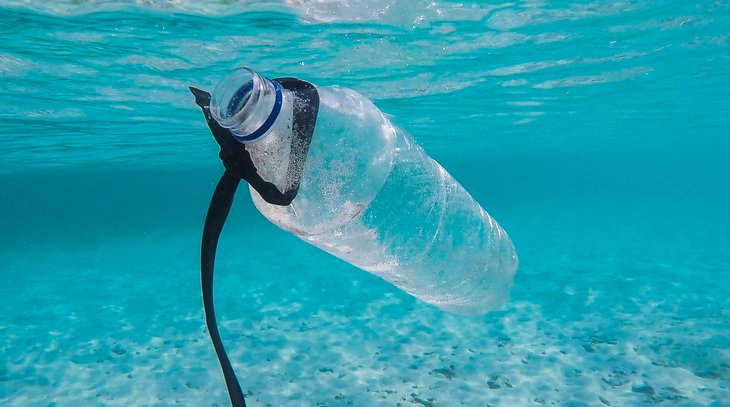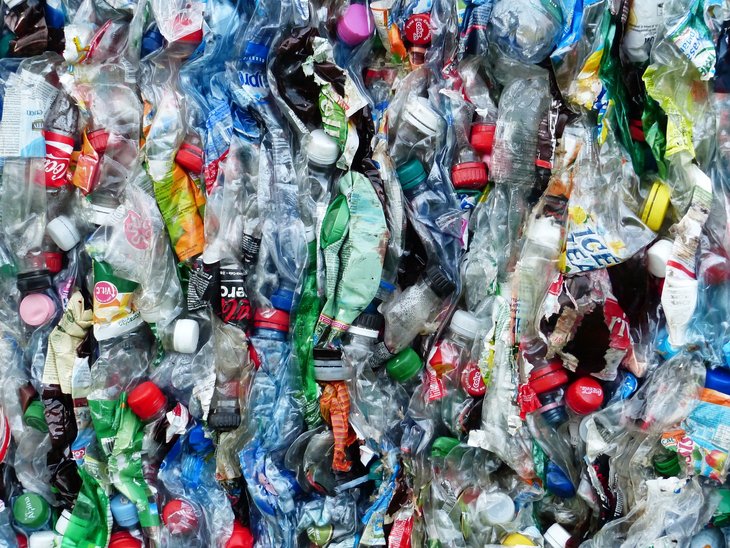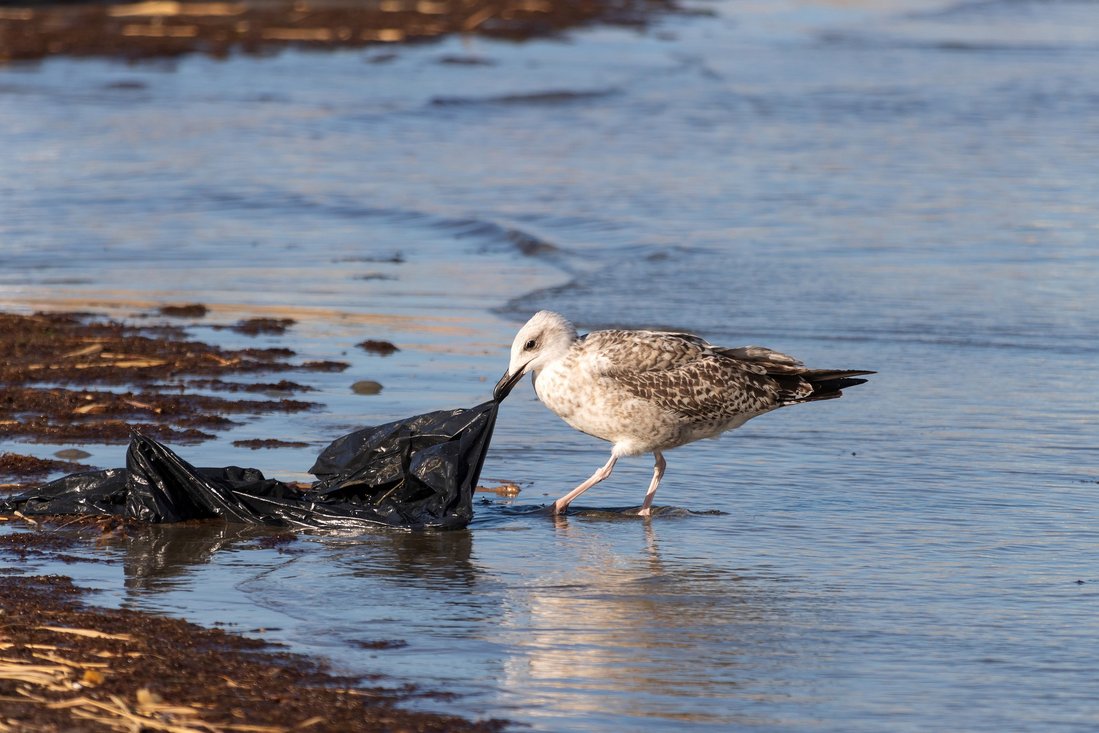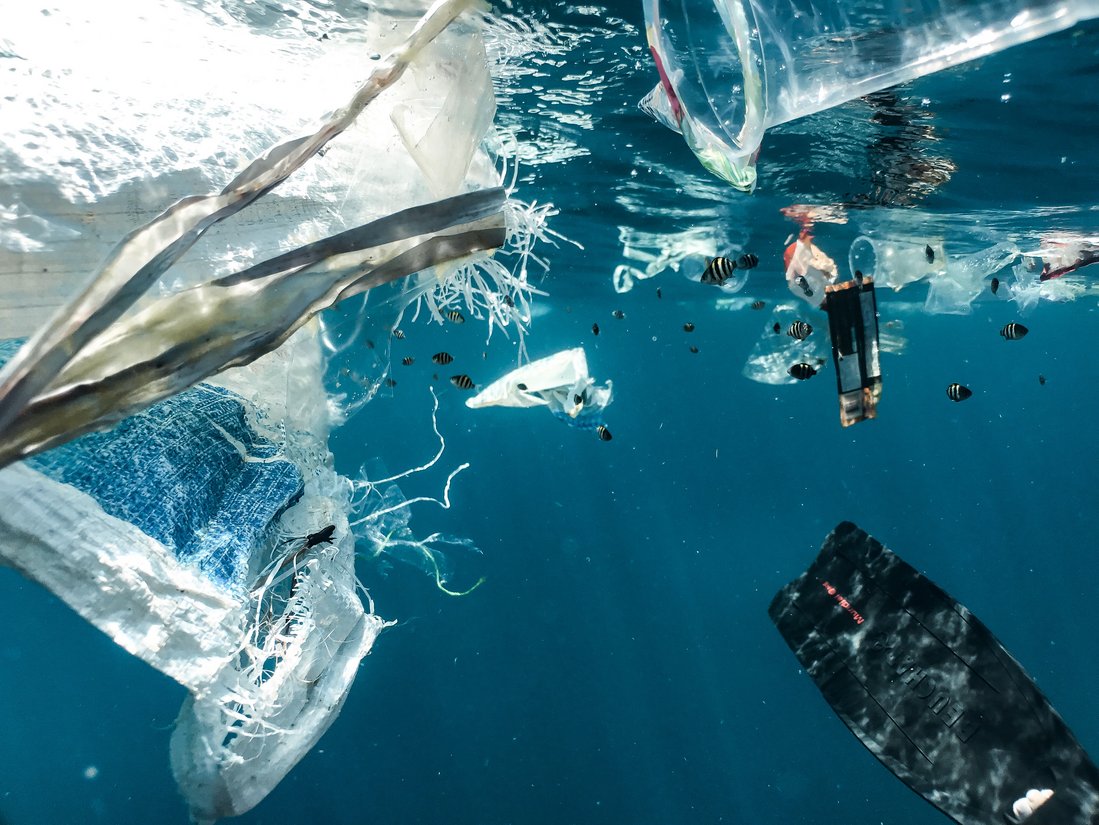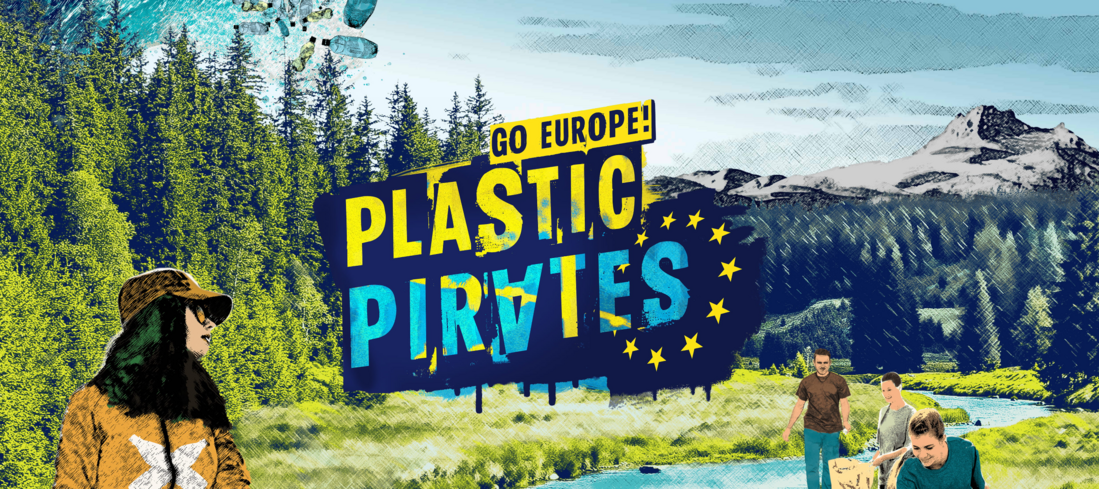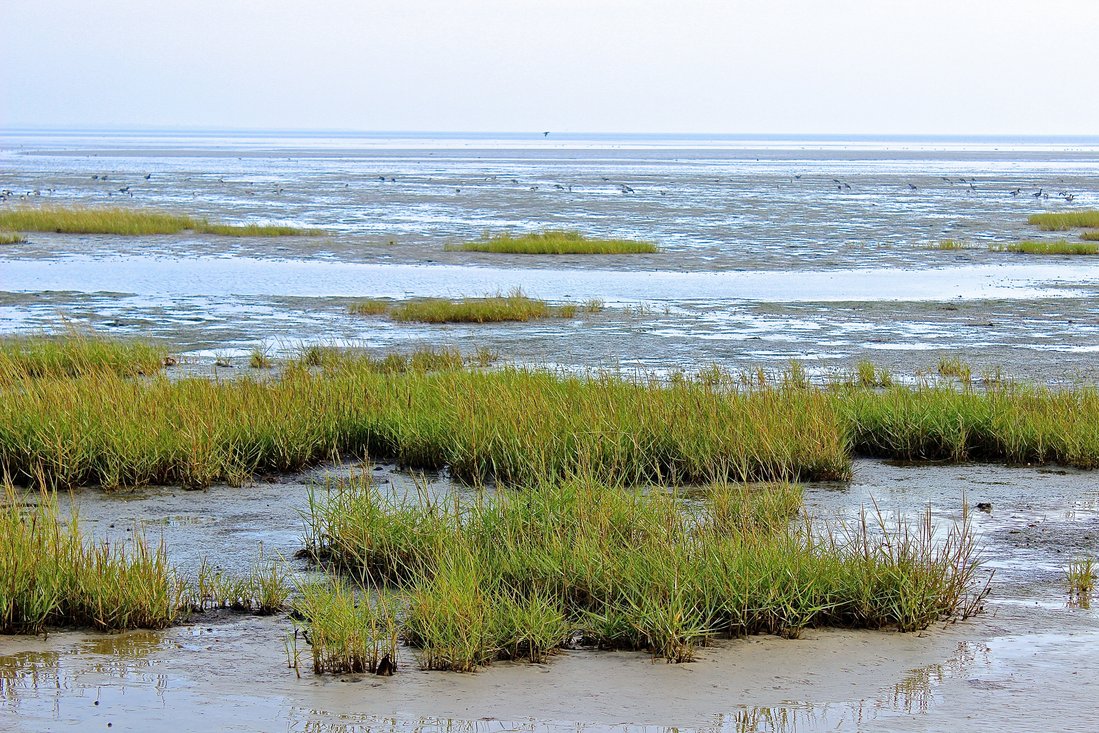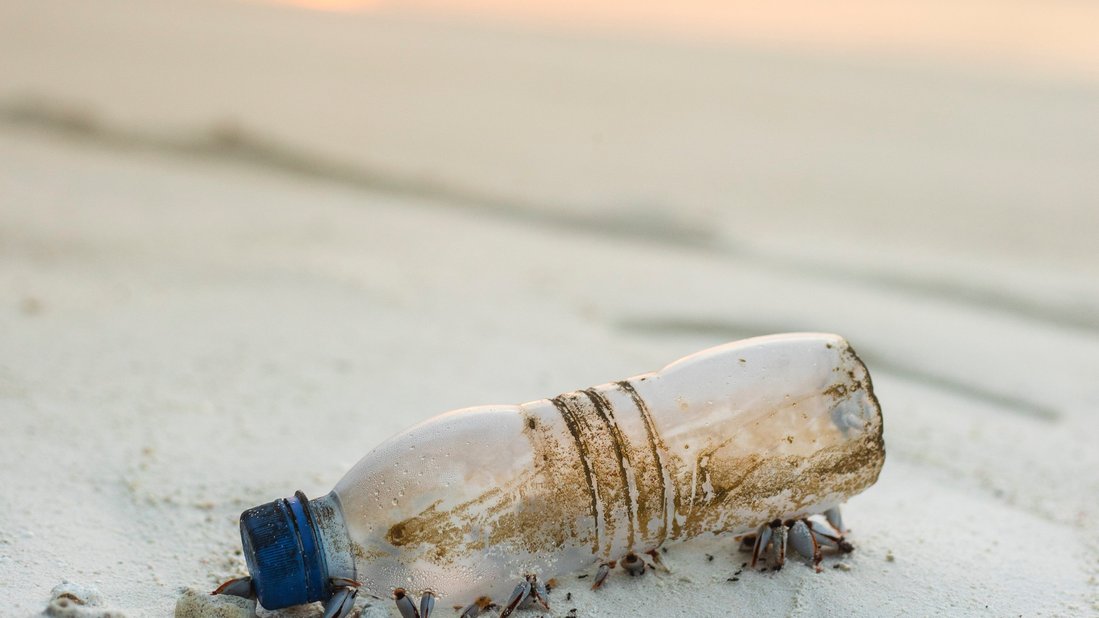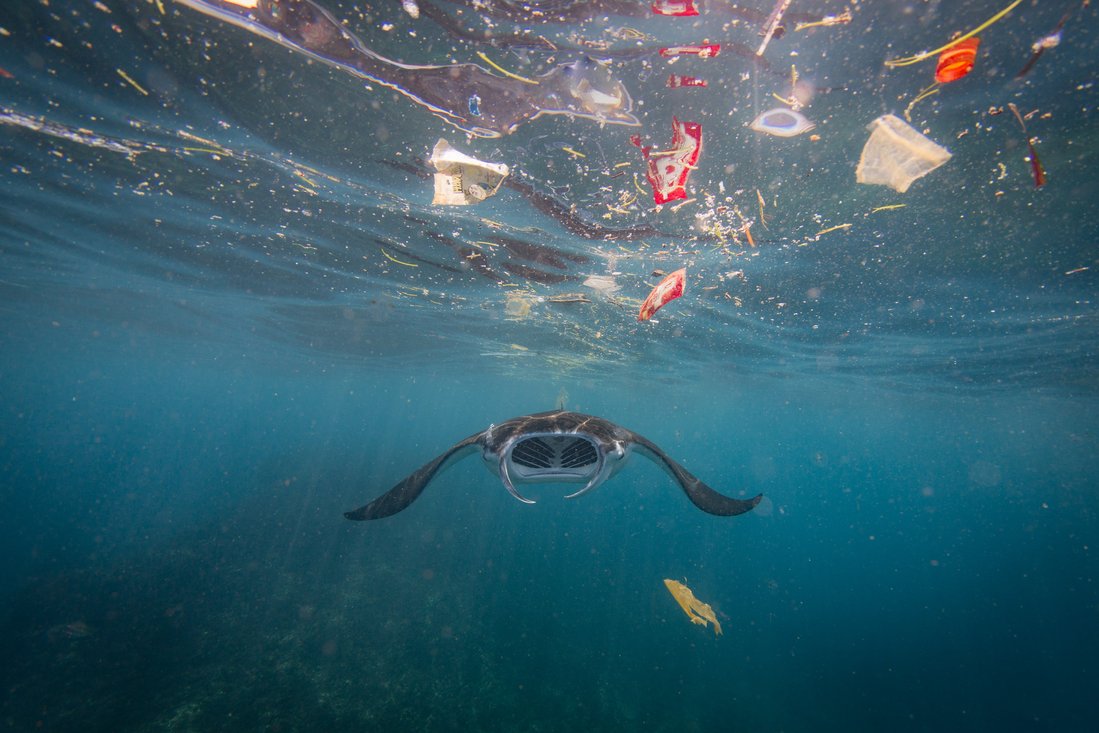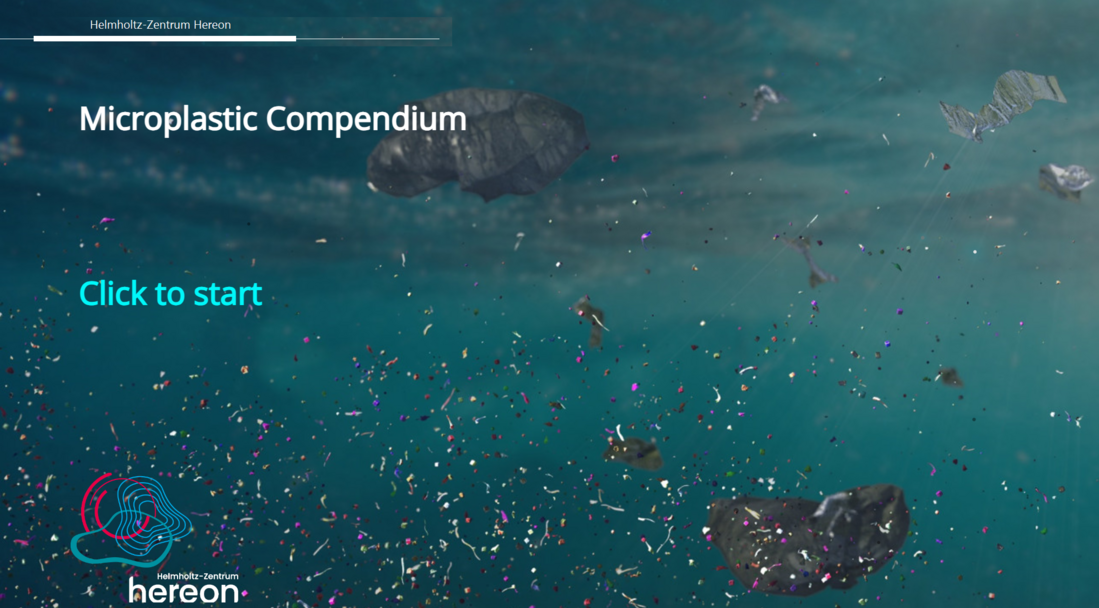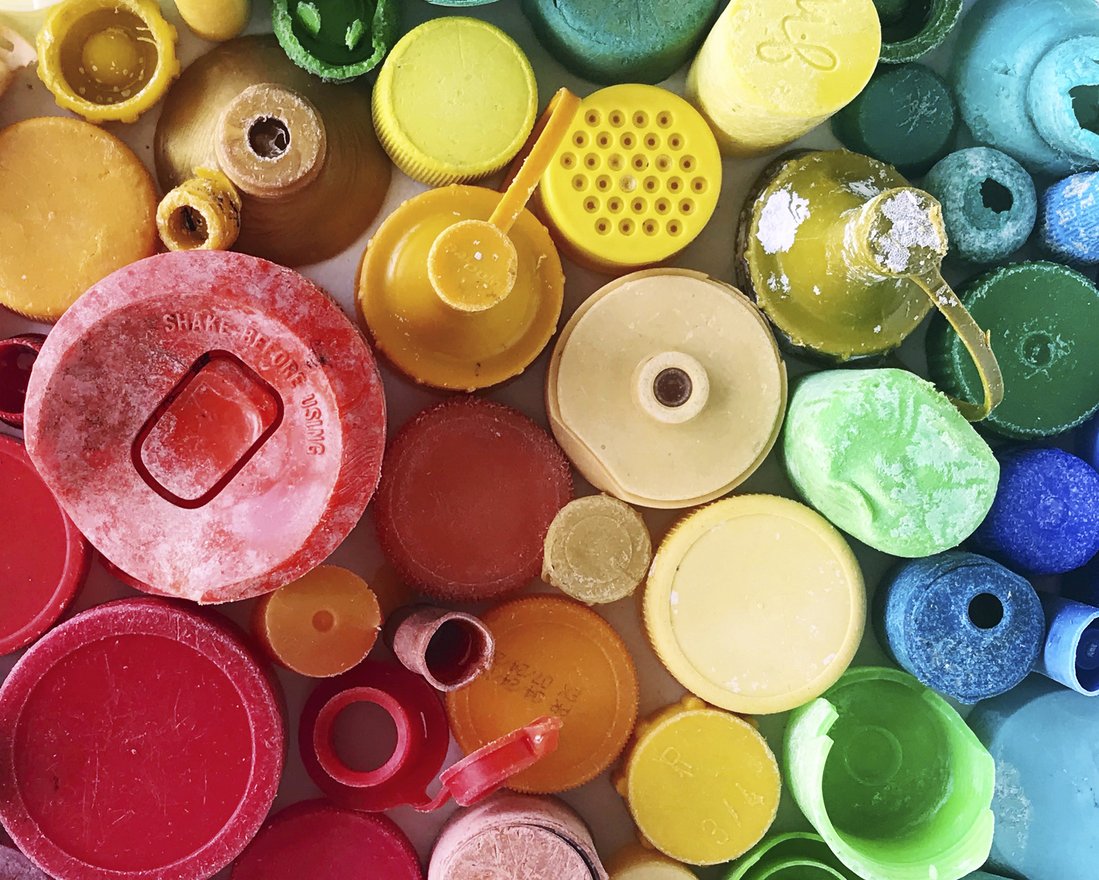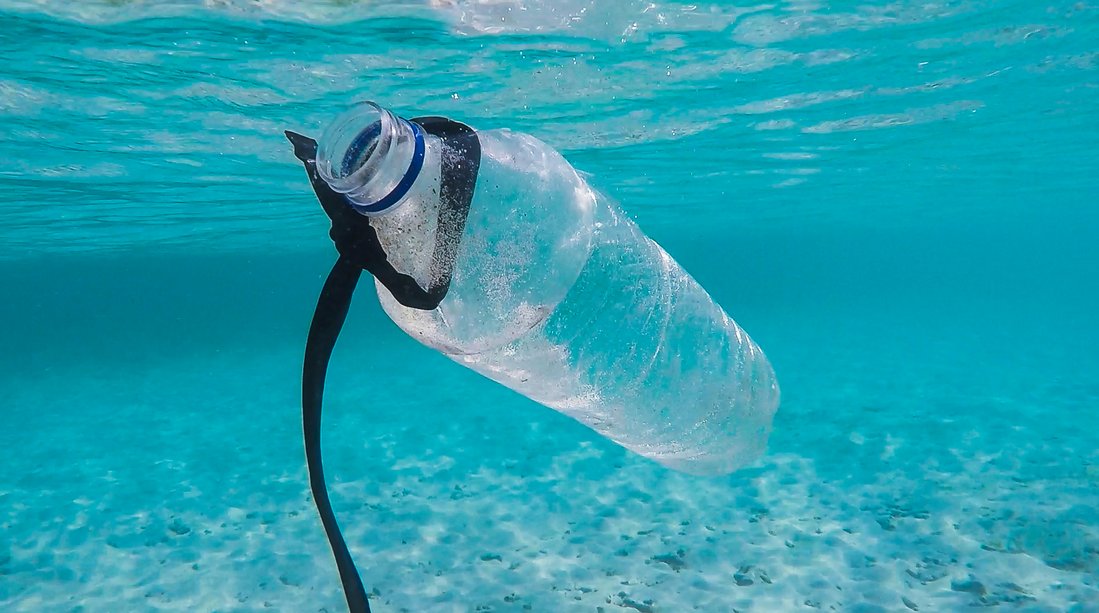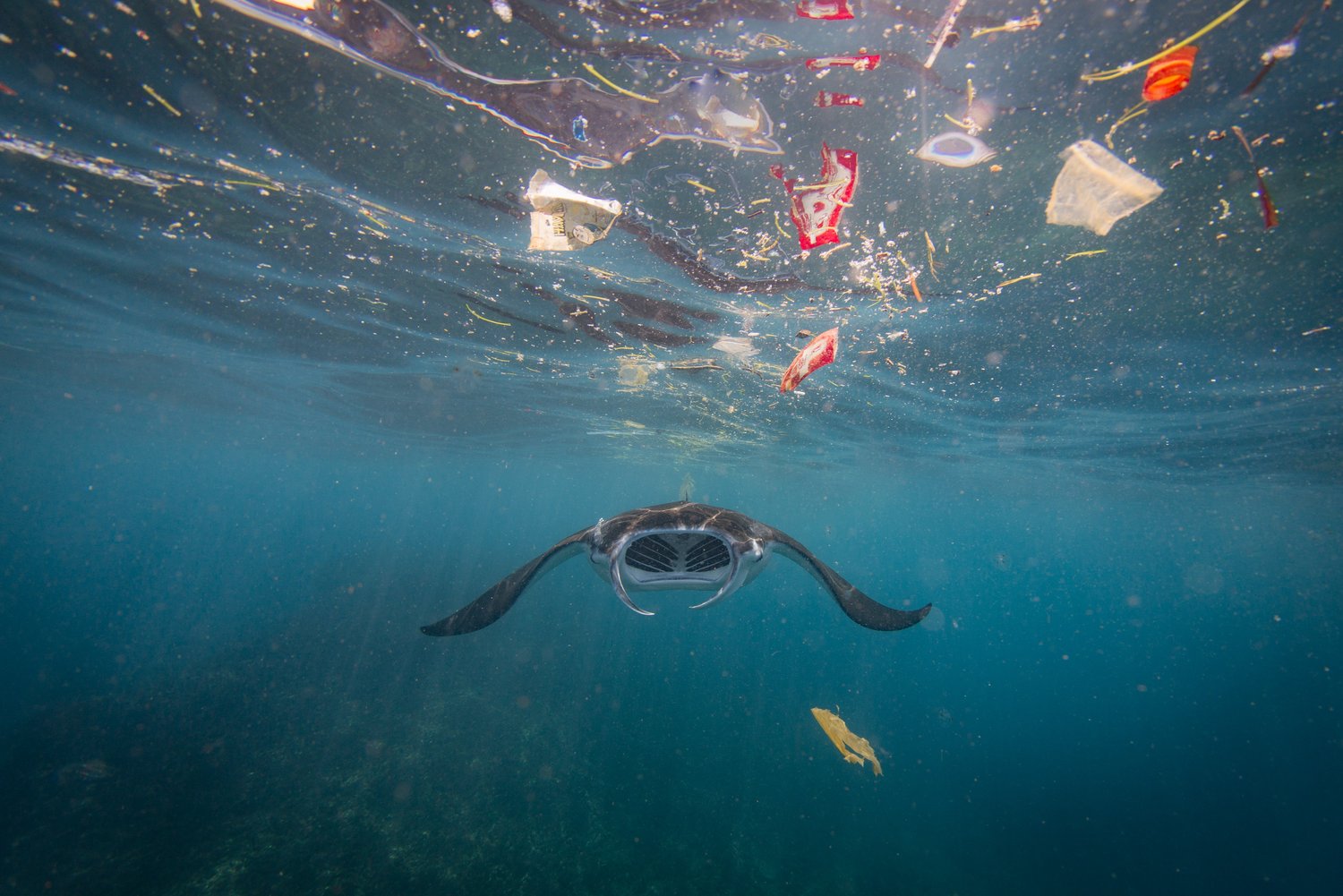
1. The history of plastics
From the ‘material of 1,000 applications’ to a waste product, the history of plastic is a journey through innovation, change and growing challenges. The first products consisting partly or exclusively of artificial raw materials were developed as early as the 19th century. Plastics have been produced commercially since the beginning of the 20th century. Fuelled by the shortage of natural materials during the Second World War, the demand for plastic alternatives increased rapidly. Because they were cheap to produce and versatile, they soon replaced products made of wood, metal, cotton, ivory or glass.
The word plastic comes from the Greek plastikós meaning “mouldable” or “formable”. In the middle of the 20th century, around two million tonnes of plastics were produced worldwide every year. Since then, production has increased exponentially. More than half of the plastics in global circulation have been produced since the turn of the millennium. Since the beginning of industrial mass production around 1950, around 9.2 billion tonnes of plastic were produced worldwide by 2017.(1)
If current trends continue, scientists warn that global production could more than quintuple within just fifty years – from roughly 200 million tonnes in 2000 to a staggering one billion tonnes by 2050.(2)
However, of the around 9.2 billion tonnes of ‘material of 1,000 applications’ produced by 2017, the majority was thrown away improperly or disposed of in other ways - only around 2.9 billion tonnes are still in use.
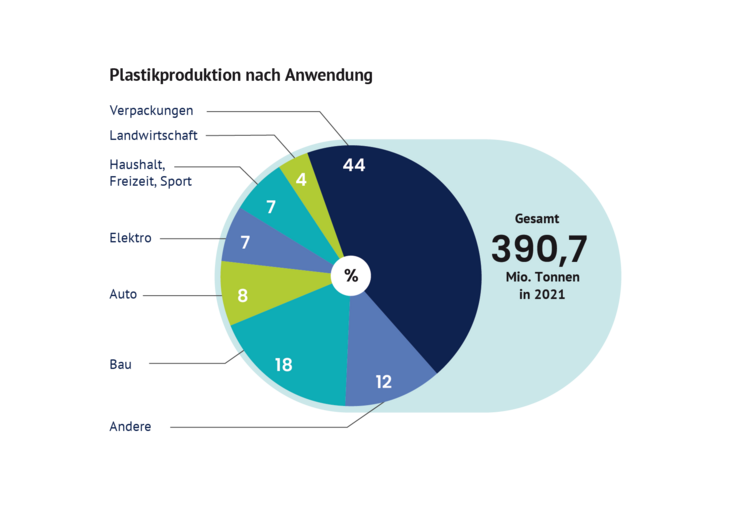
This is because packaging materials, i.e. single-use and disposable products, account for over 40 per cent of the global production volume. Although plastic products are used over longer periods of time in the electrical industry, transport and transport and construction sectors, these industries only use a third of the annual production volume.(3)
The more single-use and disposable products are produced, the more plastic waste is generated and the greater the risk of polluting the environment. Globally, only nine per cent of the plastics produced are recycled. Roughly 22 per cent is mismanaged and ends up in the environment, 49 per cent is sent to landfill, and around 19 per cent is incinerated.(4)
These figures can be explained by the use of plastic by the economy and society: producing new plastic from fossil components is cheaper than collecting, cleaning, reprocessing and reusing reusable products. The chemicals used in plastic production, such as flame retardants, plasticisers, fillers and dyes, make the recycling process even more difficult.
In most cases, only items made from a single type of polymer can be effectively recycled. The additives they contain play a crucial role in determining the quality of the recycled material. But the sheer variety of these substances often results in what’s known as “downcycling” – where recycled products are of lower quality and limited use compared to the original.
The wide range of chemical additives comes with another serious drawback: of the more than 16,000 different substances used in plastics, over 4,000 are known or suspected to be harmful, and for the vast majority, their effects remain unknown.(5) In addition, unintended reactions during the manufacturing process can produce unknown compounds, known as non-intentionally added substances (NIAS).
This chemical complexity poses a major challenge to creating a successful circular economy for plastics. The consequences are tangible. The diversity in chemical composition directly affects recycling and has a clear impact on the environment. Around 11 per cent of plastic waste ends up polluting waterways across the globe.(6)
1. McGlade, J., Samy Fahim, I., Green, D., Landrigan, P., Andrady, A., Costa, M., Geyer, R., Gomes, R., Tan Shau Hwai, A., Jambeck, J., Li, D., Rochman, C., Ryan, P., Thiel, M., Thompson, R., Townsend, K., & Turra, A. (2021). From Pollution to Solution: A global assessment of marine litter and plastic pollution. www.unep.org/resources/pollution-solution-global-assessment-marine-litter-and-plastic-pollution
2. Geyer, R. (2020). Chapter 2—Production, use, and fate of synthetic polymers. In T. M. Letcher (Hrsg.), Plastic Waste and Recycling (S. 13–32). Academic Press. doi.org/10.1016/B978-0-12-817880-5.00002-5
3. Plastics Europe. (2022). Plastics – the Facts 2022. plasticseurope.org/knowledge-hub/plastics-the-facts-2022/
4. Plastic pollution is growing relentlessly as waste management and recycling fall short, says OECD. (2022, Februar 22). www.oecd.org/en/about/news/press-releases/2022/02/plastic-pollution-is-growing-relentlessly-as-waste-management-and-recycling-fall-short.html
5. Wagner, M., Monclús, L., Arp, H. P. H., Groh, K. J., Løseth, M. E., Muncke, J., Wang, Z., Wolf, R., & Zimmermann, L. (2024). State of the science on plastic chemicals—Identifying and addressing chemicals and polymers of concern. Zenodo. doi.org/10.5281/ZENODO.10701706
6. Andrady, A. L. (Hrsg.). (2022). Plastics and the ocean: Origin, characterization, fate, and impacts. Wiley.
2. How does plastic end up in the ocean?
Plastic makes up a large proportion of marine litter, with around three quarters of waste consisting of plastic. Unlike many other substances, plastic does not break down naturally. Its durability is seen as a benefit during use - but once discarded, that same quality becomes a curse. Plastic doesn't simply go away. Not even in the ocean.
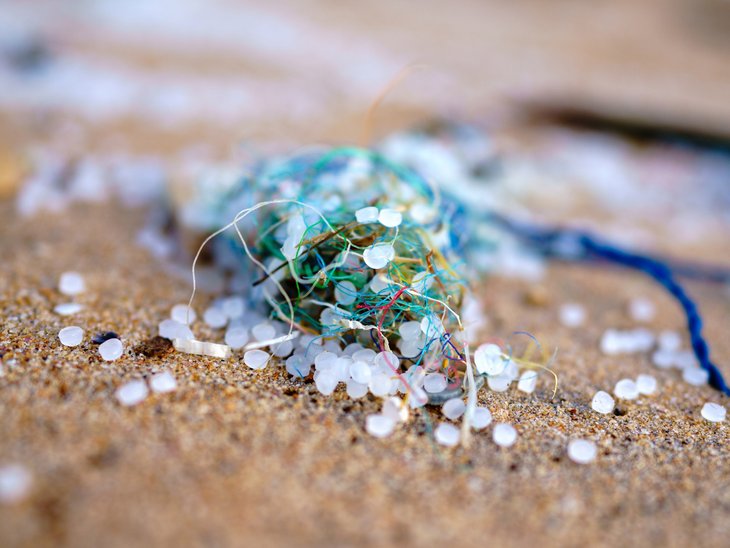
The plastic ends up in the sea in various ways. The majority of plastic waste in the oceans originates on land. This is mainly due to the fact that many countries lack suitable and reliable waste disposal systems. Where such structures are not in place, people often resort to improvised solutions such as wild rubbish tips, (partial) incineration of waste or uncontrolled disposal in nature. The plastic is then carried into the sea via the rivers, even from regions far from the coast. Huge quantities are transported by large rivers such as the Yangtze, the Indus or the Nile.
A lot of plastic also ends up in the sea after natural disasters such as tsunamis or storm surges. And that's not all: Even after very heavy rainfall, huge amounts of dirt, including a lot of plastic and microplastics, are washed into the rivers, especially from cities, and above them ultimately into the oceans.(1)
Common sources of plastic waste are:
- Illegal or unmanaged rubbish dumps
- Tyre wear from road traffic, which contributes microplastics
- Wastewater treatment plants, which often fail to fully filter out microplastics from household sources such as cosmetics and synthetic clothing
- Shipping and maritime transport. For example, through lost cargo from freighters and container ships, the erosion of paint on ship hulls (a source of microplastics), or illegal dumping of waste at sea
- Fishing, due to lost or deliberately discarded nets and lines
- Agriculture, where plastic sheeting is used to cover fields
- The plastics industry through the loss of plastic pellets even before they are processed into plastic products.
Only rough estimates can be made of how much plastic waste is added each year. This is because the routes and time spans by which plastics are transported from the hinterland to the coast, and ultimately into the ocean, are too varied. In dynamic coastal environments characterised by tides or seasonal weather phenomena, the amount of plastic in the marine environment can fluctuate greatly over short periods. Additionally, some coastal plastic waste is transported back and forth by tides and changing wind directions. This makes it difficult to estimate exact quantities. The proportion of plastic waste that is deliberately or accidentally disposed of in the sea can also only be estimated.
The amount of plastic waste in the oceans is constantly increasing
So, information about how much plastic is in the oceans is based on projections and modelling. According to these figures, between 4.8 and 12.7 million tonnes of plastic waste enter the oceans each year. To put this in perspective, if you take the average value (8.75 million tonnes), this is the same as about one lorry load of plastic being dumped every minute. However, these figures date back to 2010, and the researchers who compiled them already assumed the numbers would continue to rise. To be able to provide clear quantities in the future, it is important to improve how we manage and monitor the whole life cycle of plastic. This means looking at every stage of the process, from when raw materials are extracted to when they are disposed of or recycled. This improvement needs to be made at the municipal, national and international levels.(2,3,4)
One thing is certain: Plastic pollution in the oceans is getting worse. It is assumed that we have already exceeded the planet’s safe limits for new substances such as synthetic chemicals and plastics, meaning that humanity is now operating outside of a stable and secure environmental boundary.(5)
(1) https://www.geomar.de/entdecken/plastikmuell-im-meer#c50624
(2) Jambeck et al. (2015). Plastic waste inputs from land into the ocean. https://www.science.org/doi/10.1126/science.1260352.
(3) Borrelle et al. (2020). Predicted growth in plastic waste exceeds efforts to mitigate plastic pollution. https://www.science.org/doi/10.1126/
(4) Edelson et al. (2021). Uncertainties in global estimates of plastic waste highlight the need for monitoring frameworks. https://www.sciencedirect.com/science/article/pii/S0025326X21007542#bb0055.
(5) Richardson et al. 2023, SciAdvance, Earth beyond six of nine planetary boundaries. DOI: 10.1126/sciadv.adh2458
3. How plastic is distributed in the oceans
No matter where humans look in the world’s oceans: plastic is already there. Every marine environment studied so far has been found to contain plastic waste. Much of it floats on the surface, but many fragments sink into deeper waters and eventually settle on the seafloor.
Plastic has even been discovered in the Mariana Trench, the deepest known point in the ocean, nearly 11,000 metres below the surface. And it hasn’t stopped there: plastic pollution has reached remote coastal areas and even the distant, uninhabited marine regions of the Arctic and Antarctic.
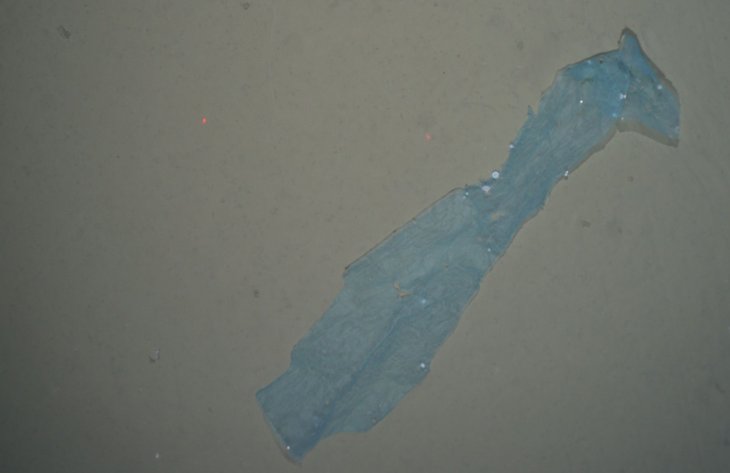
Plastic in the world’s oceans is distributed very unevenly. In some areas it’s relatively scarce; in others, it accumulates in vast quantities. Ocean currents play a major role in this. The five large subtropical gyres act like slow-moving whirlpools, trapping floating debris and concentrating it in so-called “garbage patches.”
These swirling zones collect massive amounts of plastic, but the type, volume and origin of the waste can vary greatly depending on the region and marine habitat. The most infamous of these zones, the Great Pacific Garbage Patch, is estimated to be roughly three times the size of France.(1)
However, in addition to these visible accumulations, there are also barely visible ones: researchers have detected similar quantities of plastic waste and microplastics in a remote marine protected area in the Pacific Ocean.(2)

How quickly plastic waste is carried away from the coast or its point of entry into the ocean, and how it spreads once there, depends on a complex interplay of factors. The properties of the plastic itself, such as its density, size and shape, are important influences. On the other hand, prevailing environmental conditions, such as ocean currents, wind, solar radiation and temperature, play a major role in its distribution. Biological communities of plants, animals and microorganisms also influence the fate of plastic waste in the ocean.
Plastic doesn't rot - it just gets smaller and smaller
Basically, plastic is designed not to break down. Its durability is intentional and useful during its period of use - even if, in the case of packaging, that period is very short. However, this strength becomes a curse afterwards, because plastic does not rot. At the same time, it doesn’t keep its original shape. Over time, plastic becomes smaller and smaller. This isn’t due to the material breaking down chemically, but rather to its breaking apart or more accurately: fragmenting. This means that larger plastic items such as bags, fishing nets or packaging gradually break down into ever smaller pieces through exposure to UV rays, friction and the salt in seawater.
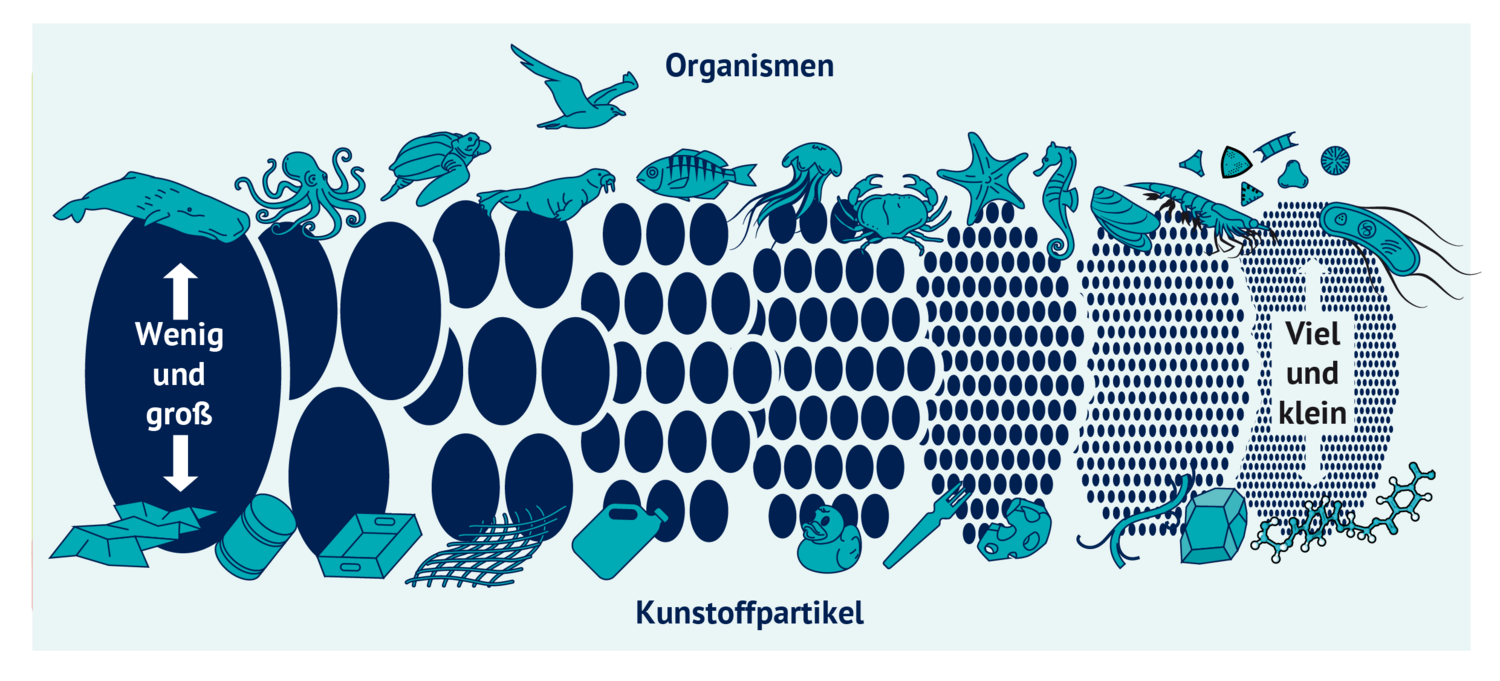
At some point, these particles become so small that they measure less than a millimetre and are classified as microplastics. But the process doesn’t stop there: even then, the particles continue to get smaller and more numerous, because they do not disappear, they persist. As fragmentation continues in the ocean, a single plastic fragment measuring one centimetre could theoretically break down into a quadrillion (1,000,000,000,000,000) tiny particles at the nanometre scale.
As the size of the plastic particles shrink, their chances of interacting with marine life increase. This is because ever more tiny fragments accumulate within marine ecosystems. As a result, a larger number of organisms come into contact with and ingest these particles, either because they adhere to algae or are present in the water, or because they are already in smaller marine organisms that are consumed by larger ones. Microplastics can be consumed by far more species than larger plastic debris, ranging from tiny zooplankton to massive whale sharks. Many of these creatures form the foundation of the food web, which means plastic can potentially travel up through different levels of the food chain and end up on our plates.
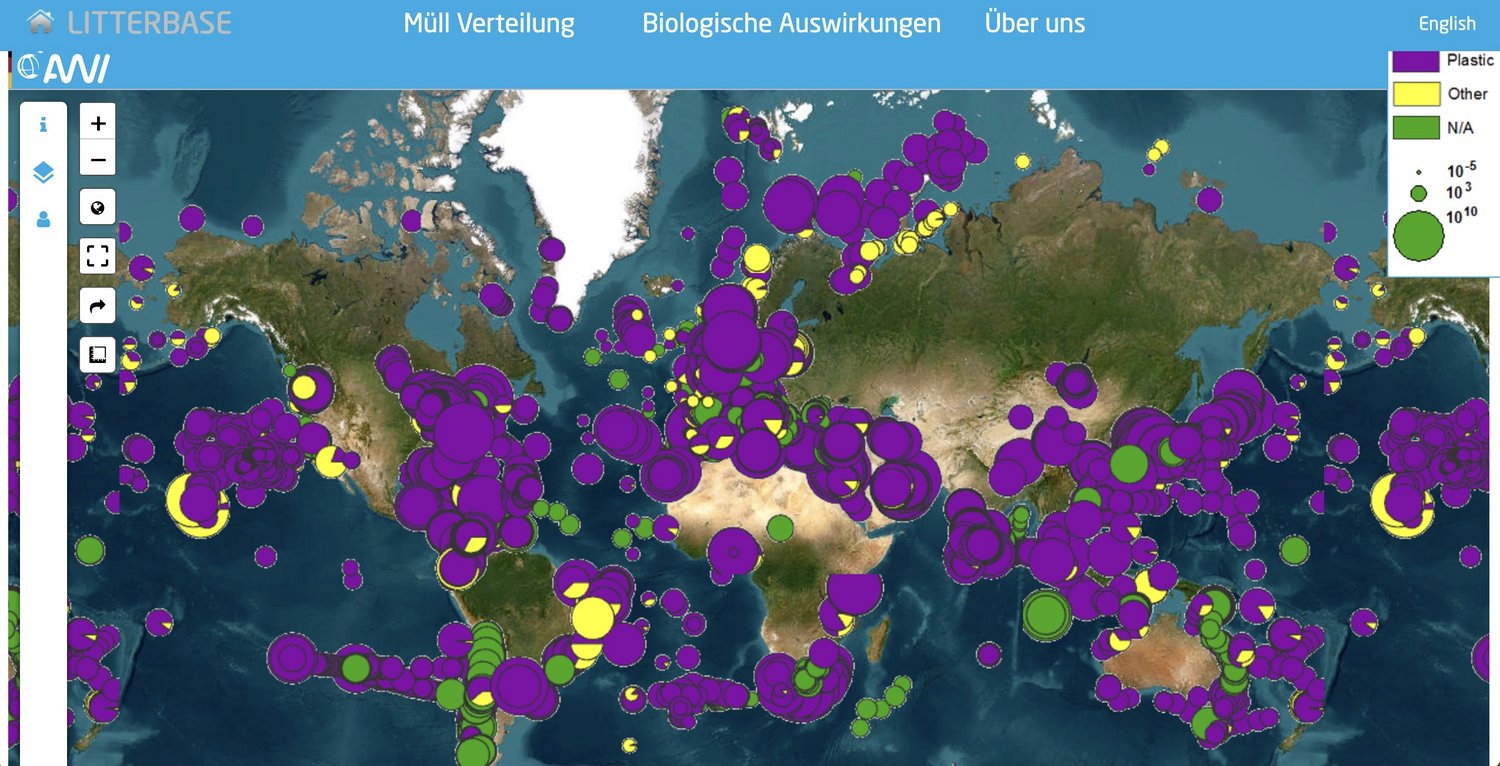
Online Portal for Marine Litter
Research into the vast challenges posed by plastic pollution in the oceans is wide-ranging. A helpful overview of scientific findings is provided by the online portal LITTERBASE, developed by the Alfred Wegener Institute.(5) LITTERBASE brings together results from over 3,000 scientific studies, presenting them in global maps and infographics that make the knowledge about marine litter easy to understand, even for non-experts. For example, the portal features a detailed map showing the distribution of marine debris worldwide.
(1) Lebreton, L., Slat, B., Ferrari, F. et al. Evidence that the Great Pacific Garbage Patch is rapidly accumulating plastic. Sci Rep 8, 4666 (2018). https://doi.org/10.1038/s41598-018-22939-w
(2) Robby Rynek, Mine B. Tekman, Christoph Rummel, Melanie Bergmann, Stephan Wagner, Annika Jahnke and Thorsten Reemtsma: Hotspots of Floating Plastic Particles across the North Pacific Ocean. Environmental Science & Technology. https://doi.org/10.1021/acs.est.3c05039
(3) https://literatur.thuenen.de/digbib_extern/dn063827.pdf
(4) Dibke, Ch. et al., 2021, „Microplastic Mass Concentrations and Distribution in German Bight Waters by Pyrolysis–Gas Chromatography–Mass Spectrometry/Thermochemolysis Reveal Potential Impact of Marine Coatings: Do Ships Leave Skid Marks?“, Environmental Science & Technology, Vol. 55, Issue 4. https://doi.org/10.1021/acs.est.0c04522
(5) https://litterbase.awi.de/
Factsheet zu Meeresmüll: https://www.umweltbundesamt.de/sites/default/files/medien/2546/dokumente/uba_factsheet_meeresmuell.pdf
4. Impact on the marine environment
The first reports of marine fish encountering plastic waste date back nearly 100 years. As early as the 1920s, researchers observed mackerel and other fish with rubber bands embedded in their bodies.(1) Since then, scientists have continuously gathered evidence of marine life coming into contact with plastic debris.
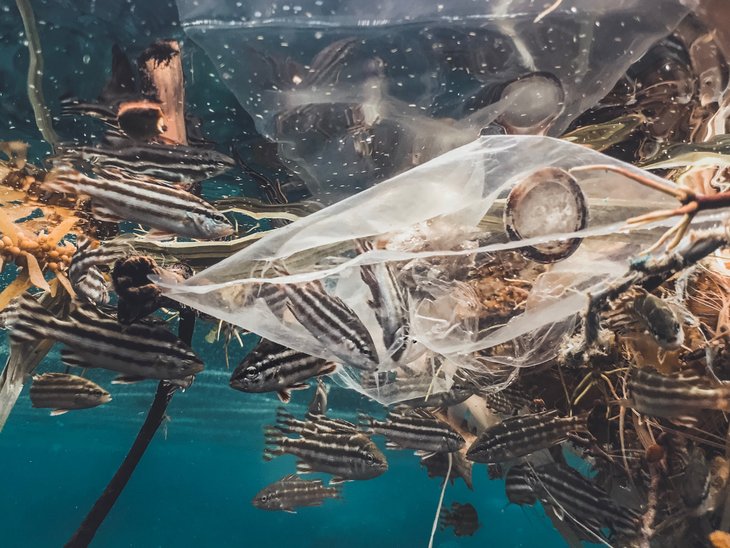
When marine animals and plants come into contact with plastic waste and interact with it, this process is known as ‘interaction’. So far, interactions with plastic have been documented in more than 2,700 different marine species. Fish and crustaceans are among the most commonly studied groups. However, all sizes and taxonomic levels of marine organisms, from unicellular organisms to marine mammals, come into contact with plastic.
The effects of these interactions can vary widely, but they are mostly harmful to the marine creatures involved. In nearly 90 per cent of the species studied, contact with plastic had negative consequences for the organism.(2)
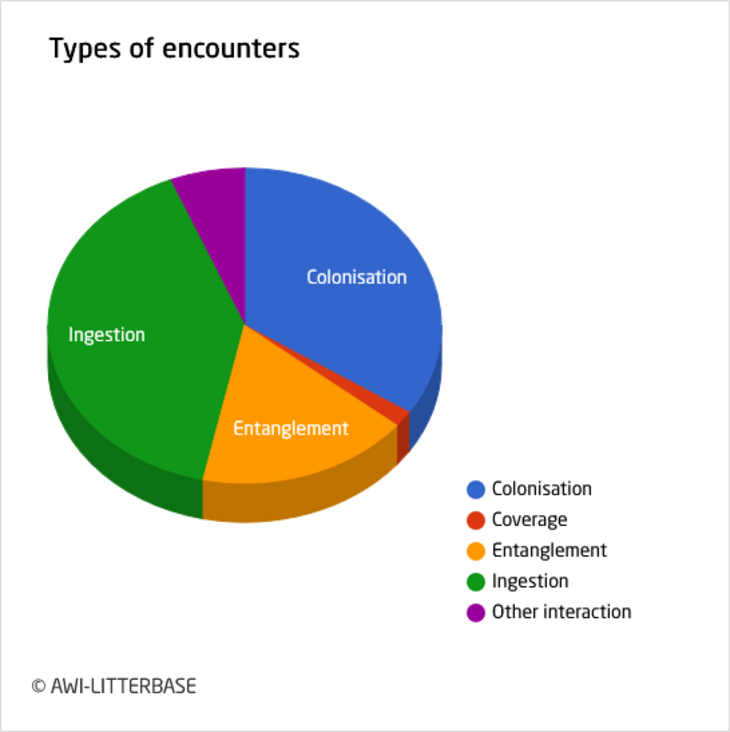
- Ingestion – Plastic is often mistaken for prey and eaten, or the prey itself may contain plastic in its stomach. Larger pieces of plastic can injure or block the digestive tract. Sometimes, plastic remains in the stomach, creating a false sense of fullness. This can cause the animal to eat less, which in turn affects its growth, reproduction, and in extreme cases, can lead to death. Even the ingestion of microplastics can result in reduced growth and fertility. Additionally, microplastics may have toxic effects on metabolism and the nervous system.
- Colonisation – Any material floating in the sea is quickly colonised by microbes, algae and animals. Plastic is no exception. It joins natural floating materials like wood, but because it is so durable and persists for a long time, it can help spread species beyond their usual geographic ranges. Non-native species can disrupt and threaten functioning marine ecosystems.
- Entanglement – Marine animals often get caught in discarded fishing nets, balloon strings, or long plastic bags. The plastic wraps around their bodies, trapping them or causing injuries. If fish or invertebrates remain entangled for too long, they may starve or become easy prey. Marine mammals can suffocate because they cannot reach the surface quickly enough to breathe.
- Covering: Plastic bags or tarpaulins can lie on the seabed, for example, or cover plants and animals. The longer a piece of plastic covers an area, the less oxygen there is under or in the plastic, which can lead to the death of organisms or plants.
Other interactions – This category includes, for example, birds or other animals using plastic pieces to build their nests. It also covers cases where animals get trapped inside plastic containers and cannot escape, or where bottom-dwelling creatures bury plastic fragments deeper into the seabed. Additionally, this includes the breakdown of plastic into smaller pieces caused by marine animals.
The impact of plastic on a living organism depends on many different factors. The type of interaction largely determines the possible effects on the organism. In addition, the size relationship between the organism and the plastic piece, as well as its shape and flexibility, play an important role. The duration of the interaction and the amount of plastic involved are also significant.
Possible effects on the organism are influenced by the type and properties of the plastic’s chemical components, additives such as plasticisers, pollutants, and the biological communities that develop on the plastic over time in the ocean, also known as the ‘plastisphere’. The plastisphere can host microorganisms, animals and plants that may serve as food for other organisms but can also have harmful effects. Factors such as the developmental stage, sex, health condition and overall resilience of a marine creature also shape the potential consequences of interacting with plastic debris.
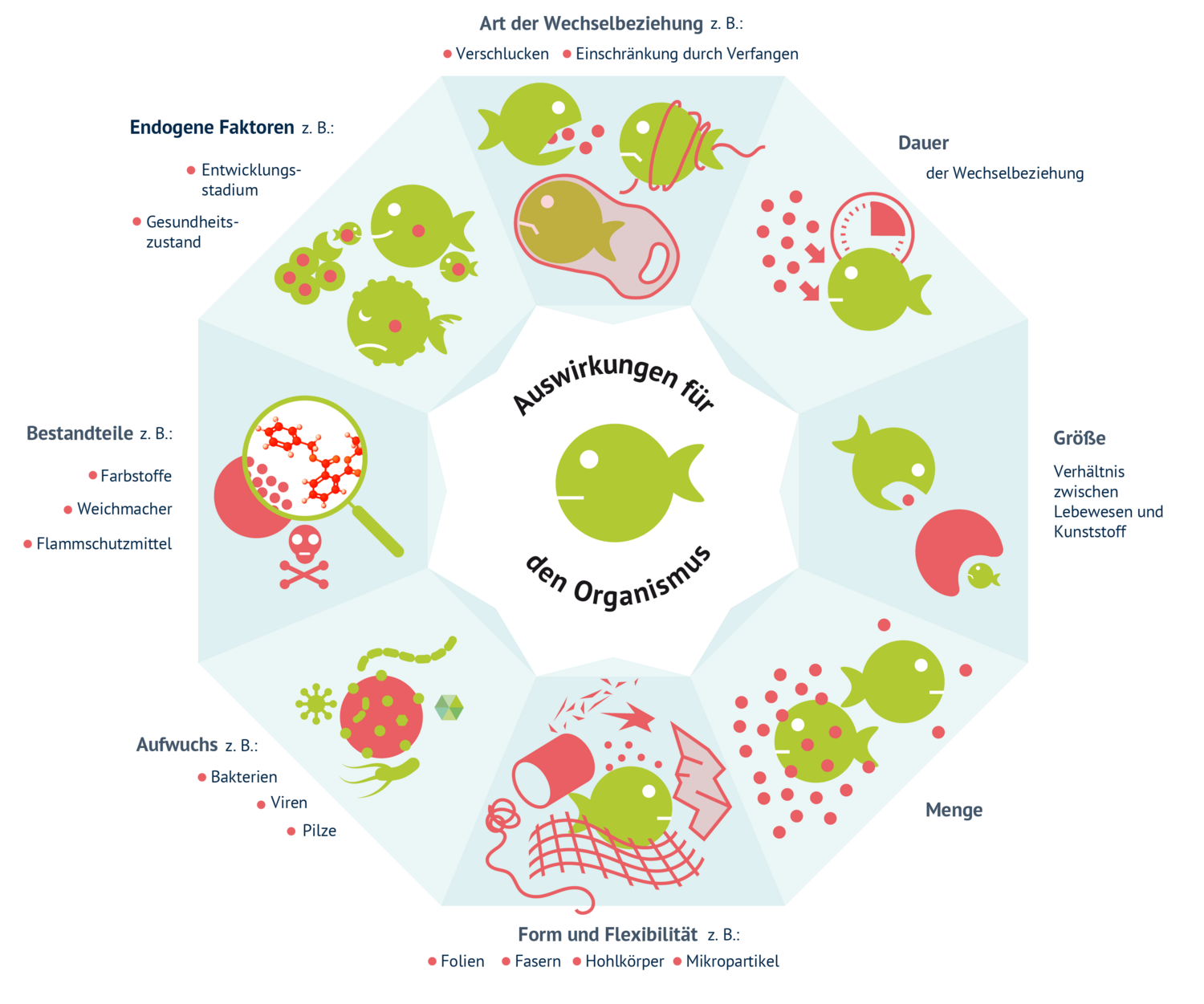
The effects of plastics and the chemicals they contain on individual organisms can vary greatly. In laboratory and field studies, researchers have demonstrated a range of effects, from minor or temporary health impairments to serious injuries, blockages of the digestive system, reduced growth, developmental and reproductive disorders, physiological changes, inflammatory reactions, organ damage and even death. However, some studies have not been able to prove any negative consequences of interaction with plastic for living organisms, and others have shown that organisms have adapted to increased exposure at a given site.
These varying results can partly be explained by the factors already mentioned (see infographic) and the wide range of possible effects from interactions. Additionally, plastics and their additives impact multiple levels of biological organisation, ranging from individual molecules to entire ecosystems. This complexity makes it harder to detect and compare results across different studies. On top of that, marine ecosystems are under pressure from many other stressors, such as changes in temperature and pH, the release of pharmaceutical substances, and more. As a result, the overall combination of factors is highly relevant and calls into question analyses that focus only on individual factors.
The consequences of plastic pollution for animals, plants and marine biodiversity, as well as marine ecosystems and the diversity of effects, must therefore continue to be researched intensively. Only by basing our understanding on reliable findings from German and international marine research can we assess and address the ecological and economic consequences of plastic pollution through political initiatives, technical innovations and international legislation.
(1) Gudger, 1928 & 1929
(2) Eine umfassende Zusammenstellung des Ausmaßes der Interaktion zwischen Meereslebewesen und Kunststoffmüll in deutscher und englischer Sprache finden Sie hier: Tekman et al. (2022). Impacts of plastic pollution in the oceans on marine species, biodiversity and ecosystems. WWF Germany, Berlin. 221 pages. DOI: 10.5281/zenodo.5898684. www.wwf.de/plastic-biodiversity-report
(3) Galloway et al. (2017). Interactions of microplastic debris throughout the marine ecosystem. Nature Ecology & Evolution 1:0116. https://www.nature.com/articles/s41559-017-0116
(4) Ryan (2016) Ingestion of plastics by marine organisms. → link.springer.com/chapter/10.1007/698_2016_21
5. The consequences for people and the economy
Plastic pollution in the oceans not only has mostly negative ecological consequences—it also leads to economic losses. Direct costs arise when potential damage needs to be prevented or actual damage repaired. Examples include beach clean-ups in tourist areas and the removal of ghost nets blocking ship propellers.
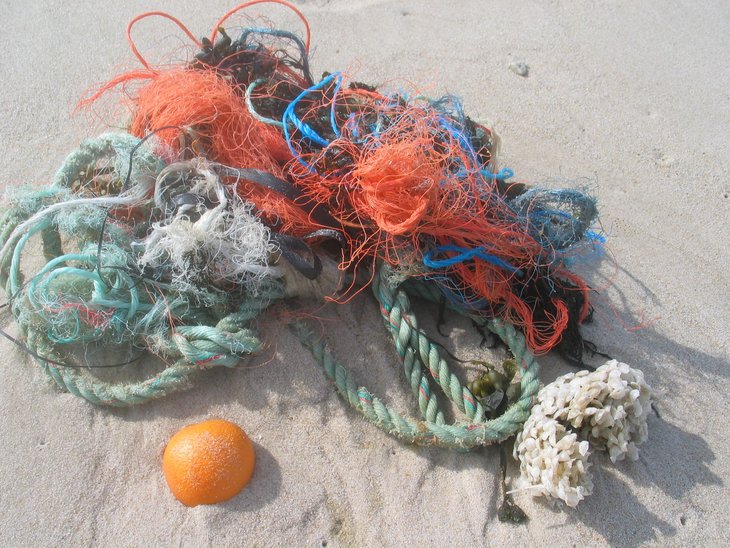
Removing plastic waste from coastlines and open seas is a true Sisyphean task: it is both costly and time-consuming, and must be repeated continuously. This is because new amounts of plastic are constantly transported from land or sea back into the freshly cleaned areas. As a result, these costs keep arising again and again.
Additional direct costs come from the loss of the plastic material itself, for example, when fishing nets or plastic pellets, which serve as raw materials for the plastics industry, are lost. In poorer countries without effective waste management systems, plastic waste clogs rivers and sewage systems, leading to negative impacts on transport and hydrology, increased flooding, and a rise in waterborne diseases, including malaria.
Indirect costs arise from losses in production or income, for example when fishermen catch less fish or fish of lower quality due to marine pollution, leading to a drop in market prices. So-called ‘welfare costs’ are also part of these indirect costs. These include damages caused by plastic waste to human health or the loss of ecosystem services.
Calculating the precise amount of indirect costs caused by reduced ecosystem services due to plastic pollution is a major challenge. It is estimated that every tonne of plastic in the oceans causes a loss of profits of between 3,300 and 33,000 US dollars.(1) Extrapolating this figure to the total amount of plastic waste in the oceans would result in an annual loss of between 500 and 2,500 billion US dollars due to reduced marine ecosystem services.
Consequences of plastic waste for food security
According to the Food and Agriculture Organization, more than 3.3 billion people worldwide obtain at least one-fifth of their basic animal protein needs from consuming fish.(2) In poorer countries such as Bangladesh, Cambodia, or Gambia, the reliance on fish as a protein source is typically even greater. Fish is not only an essential and affordable part of many diets but also an important source of income: up to 820 million people worldwide depend directly or indirectly on fisheries and aquaculture.(3)
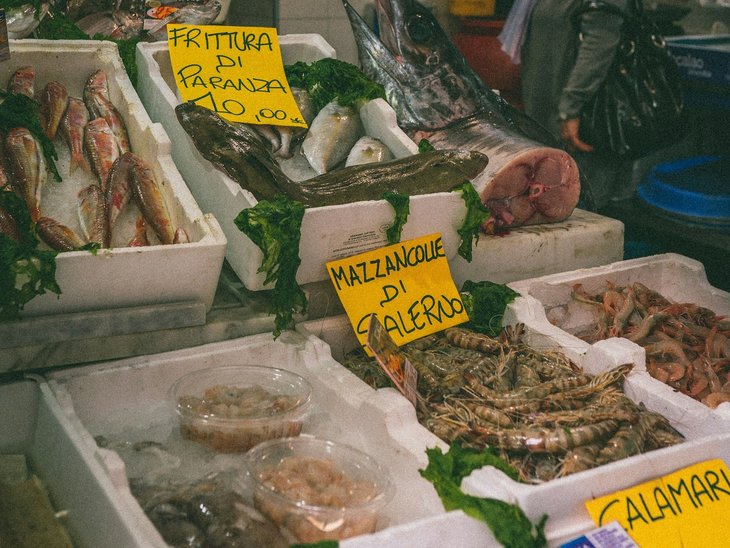
Despite the global importance of living marine resources and the ever-increasing amount of plastic waste in our oceans, the extent to which plastic in the ocean endangers the food security and livelihoods of millions of people is not yet fully understood.
So far, little research has been done on how much plastic a person might inadvertently ingest through eating fish or seafood contaminated with plastic. The digestive system of marine animals likely contains the largest amounts of plastic particles. However, most fish are prepared for human consumption by removing the digestive tract. For this reason, the risk posed by eating contaminated seafood is generally thought to be lower than that from everyday exposure to plastics in the kitchen or inhaling microplastics in urban areas or by the coast.(4)
Nonetheless, smaller plastics - along with the chemicals and environmental pollutants they carry - can enter the edible parts of fish and seafood, and ultimately the human body. The resulting health risk is also the subject of current research.(5) Although studies on the extent and effects of microplastic exposure in humans are still in their early stages, tiny plastic particles have already been detected inside the human body. Researchers have found plastic fragments in the digestive tract, blood and blood vessels, lungs, heart, placenta, and even in breast milk. Laboratory tests with human cell lines suggest inflammatory reactions, for example in inflammatory bowel disease, blood cells and brain cells, with reactions including cell death.(6) Recent findings also indicate a possible link between nanoplastic particles and Parkinson's disease or dementia.(7)
(1) Beaumont et al., 2019. Global ecological, social and economic impacts of marine plastic. Marine Pollution Bulletin, 142. DOI:10.1016/j.marpolbul.2019.03.022
(2) FAO (2020). The State of World Fisheries and Aquaculture, 2020. Sustainability in action. Rome. https://www.fao.org/documents/card/en/c/ca9229en
(3) FAO, Duke University & WorldFish, 2023. Illuminating Hidden Harvests – The contributions of small-scale fisheries to sustainable development. Rome. https://doi.org/10.4060/cc4576en
(4) Garrido Gamarro et al., 2020. Microplastics in Fish and Shellfish – A Threat to Seafood Safety? Journal of Aquatic Food Product Technology, Volume 29. https://doi.org/10.1080/10498850.2020.1739793
(5) Bouwmester et al., 2015. Potential Health Impact of Environmentally Released Micro- and Nanoplastics in the Human Food Production Chain: Experiences from Nanotoxicology. Environmental Science&Technology. DOI: 10.1021/acs.est.5b01090 oder Alberghini et al. 2023. Microplastics in Fish and Fishery Products and Risks for Human Health: A Review. International Journal of Environmental Research and Public Health, 20(1). https://doi.org/10.3390/ijerph20010789
(6) Landrigan et al., 2023. The Minderoo-Monaco Commission on Plastics and Human Health. Annals of Global Health 89(1):23. DOI: 10.5334/aogh.4056
(7) Liu et al., 2023. Anionic nanoplastic contaminants promote Parkinson’s disease–associated α-synuclein aggregation. Science Advances, Volume 9, Issue 46. https://www.science.org/doi/10.1126/sciadv.adi8716
6. Solutions for cleaner oceans
Plastic pollution is a global and rapidly growing problem that urgently needs to be addressed. This is well understood by politicians and has been recognised at the highest levels of international cooperation - a crucial step given the global scale of the issue. For example, the United Nations has embedded the goal of maintaining clean ecosystems on land and in the sea within several of its Sustainable Development Goals (SDGs):
The Global Plastics Treaty
In March 2022, the United Nations Environment Assembly met in Nairobi, Kenya, to address the growing global plastic crisis. At the summit, 175 countries voted in favour of drafting a legally binding agreement to combat plastic pollution. A timeline was agreed with the aim of implementing the treaty by the mid-2020s.
The agreement will bind countries to strict standards for plastic consumption, providing a clear path to a future without plastic pollution. The idea is that a common standard will create a level playing field for all and provide the necessary incentives and support for national measures.
To contain and prevent further discharges of plastic into the world's oceans, all stages of the plastic life cycle and the stakeholders involved must be addressed, from the extraction of raw materials to production, use and disposal.
An often cited positive example of such a global environmental agreement is the Montreal Protocol for the protection of the ozone layer. Since its introduction in 1987, more than 99 per cent of ozone-depleting substances have been phased out through uniform global bans and the ozone layer has been put on a gradual path to recovery.
Recycling and reuse of plastic
There is also movement at the European level. Following the 2019 Single-Use Plastics Directive, which banned the sale of certain disposable plastic products such as cutlery and drinking straws, the focus has now shifted to improving plastic recycling – with the aim of keeping plastics out of the environment. But recycling is far from straightforward.
Since the beginning of industrial plastic production, the vast majority of plastics have been made from non-renewable raw materials. According to figures from the plastics industry association Plastics Europe (2022), over 90 per cent of all plastic products manufactured in 2021 were derived from fossil resources such as crude oil. That leaves the global share of plastics from circular or bio-based production chains at less than ten per cent.
There are several reasons why recycled plastic – known as recyclate – still accounts for such a small share of production:(2)
- the wide variety of plastic compositions makes recycling more difficult
- the quality of plastic degrades with each recycling cycle
- recycled material is often more expensive than virgin plastic
- fresh (virgin) plastic must often be added to maintain performance standards
- the level of contamination in recycled plastics is rising
As part of the European Green Deal, the Circular Economy Action Plan has been renewed, outlining key conditions and possible solutions to tackle plastic pollution more effectively.(3) Among the priorities identified are the following:
- a robust legal framework for sustainable product policy
- focus on key value chains across sectors and industries – including electronics, ICT, batteries and vehicles, packaging, plastics, textiles, construction, food, water and nutrients
- technological advancement of existing recycling plants, waste collection systems and sorting infrastructure
- deposit-return schemes for high-quality plastics and a general shift from single-use to reusable products
- innovative product design – for example, the development of alternatives to plastic fishing gear such as Dolly Ropes (see info box)
- “design for recycling” principles, with incentives to use high-quality, single-grade plastics that can be more easily reused
There is no quick fix; the solution must lie in addressing the problem at its root. This means reducing plastic use, especially single-use plastics and packaging, and maximising the recycling of existing plastics. Achieving this will require cooperation from the international community, not only at the governmental level but also across scientific, economic, and civil society sectors.
Less plastic in fisheries - the example of Dolly Ropes
While the production of plastics has significantly advanced the fisheries and aquaculture sector, it has also become a major contributor to marine pollution. It is estimated that between 17 and 22 per cent of plastic debris found on the seabed or suspended in the water column can be traced back to fishing and aquaculture activities.(4) This sector is thus a significant source of marine plastic waste, yet it is also directly affected by the adverse ecological and economic impacts of both micro- and macroplastic pollution. Consequently, there are initiatives aimed at reducing plastic waste in this area through innovation.
One notable example is the so-called Dolly Ropes. These are fishing lines composed of numerous individual orange or blue plastic fibres, which are attached to bottom trawl nets as a form of chafing gear. However, they begin to fray after just a few days of use and frequently end up in the environment. Dolly Ropes are particularly common on the seabed and beaches of the North Sea, for instance.
To address this problem, experts from the fishing industry collaborated with researchers from the Thünen Institute of Baltic Sea Fisheries. Their solution was the development of a buoyancy device that eliminates the need for Dolly Ropes altogether. Many German crab fishers have already adopted this cost-effective and more sustainable alternative.
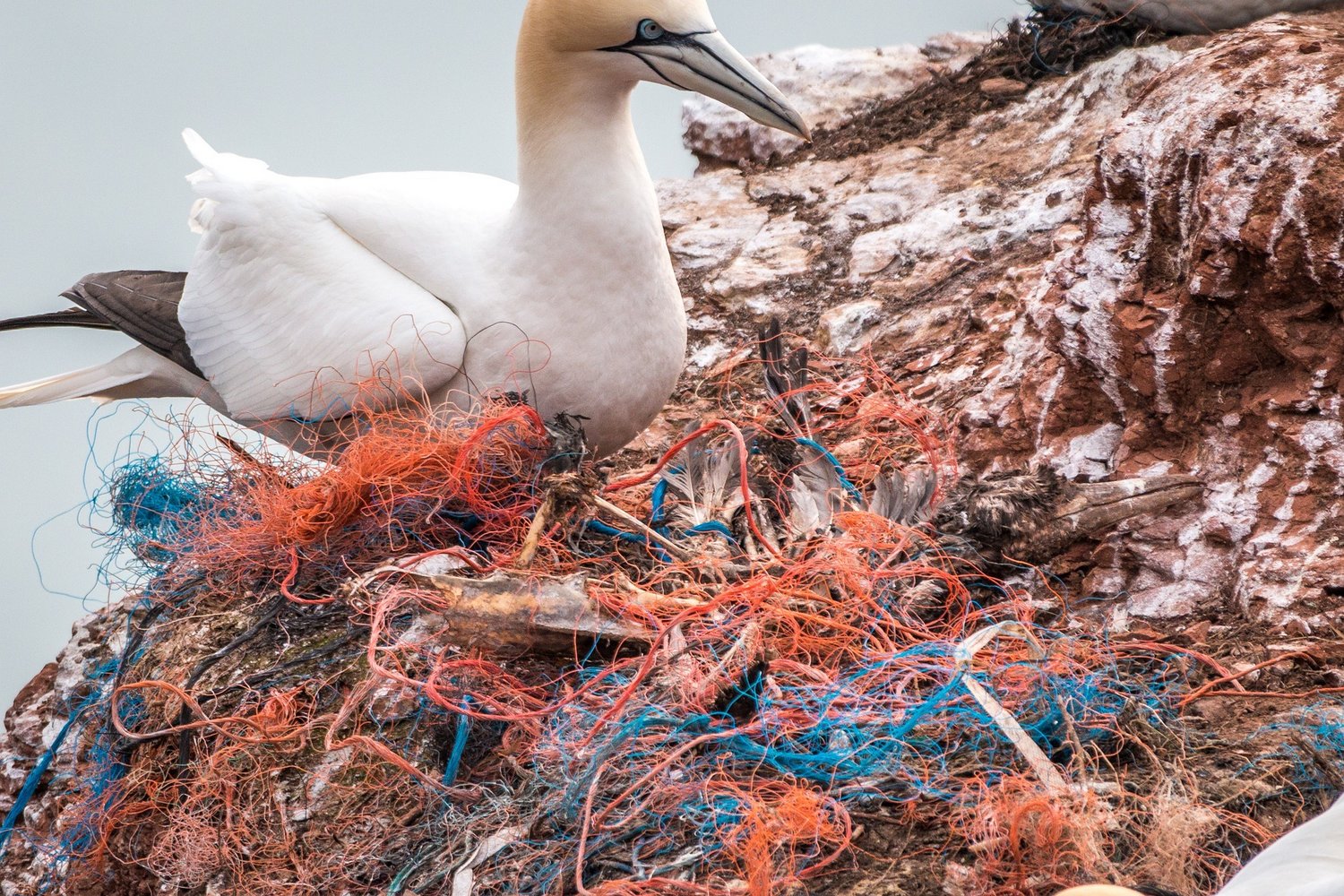
Buoyancy devices as an alternative to Dolly Ropes
The website of the “DRopS – Dolly Rope Suspension” project by the Thünen Institute of Baltic Sea Fisheries outlines the concept, approach, and implementation behind the development of the buoyancy device.
Technical ideas for removing marine litter
There are also proposals to remove plastic waste from the ocean. Floating clean-up devices can, to a limited extent, collect plastic debris from the surface of the water. However, this represents little more than the tip of the iceberg. The plastic waste visible on the surface accounts for only a small fraction of the total pollution in the ocean. The vast majority is dispersed throughout deeper layers or has sunk to the seabed, where it cannot be recovered in significant quantities.
Moreover, many of these collection technologies inadvertently trap marine organisms, raising serious concerns about their ecological impact. As a result, many scientists are calling for globally binding standards to assess both the environmental compatibility and the effectiveness of such technologies. They argue that these devices should be used only in efforts to restore particularly polluted marine habitats — and must not become a tool for greenwashing. In other words: no plastic offset programmes.
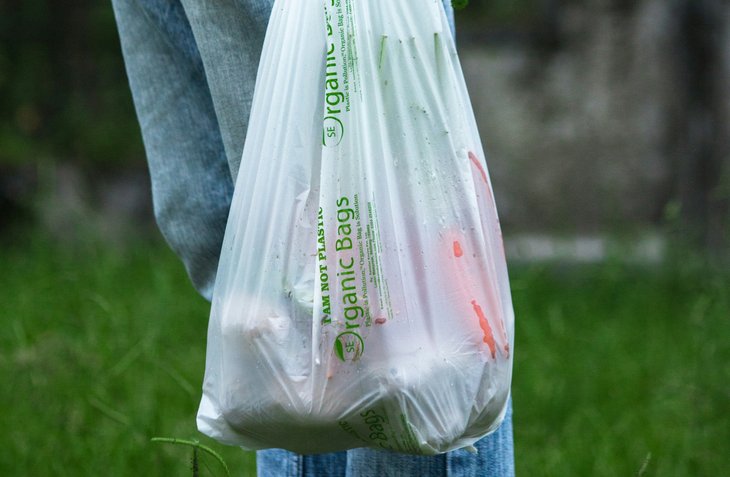
Bioplastics are another recurring topic in the debate. This term refers to plastics that are either bio-based and/or biodegradable. Bio-based plastics are made partly from plant-derived ingredients rich in starch or cellulose, such as maize or sugarcane. However, being bio-based does not necessarily mean they are biodegradable.
Biodegradable plastics, on the other hand, are capable of breaking down under certain environmental conditions. They can be produced from natural sources – like cellulose or starch – or from synthetic, petroleum-based compounds. Yet research suggests that both bio-based and biodegradable plastics can be just as toxic as conventional, fully synthetic plastics.(5).
A study from California has also made it clear that bio-based plastics and synthetic textile blends do not biodegrade in the ocean.(6) In addition to their poor breakdown in marine environments, the overall environmental footprint of these alternative plastics is not significantly better than that of conventional, fully synthetic materials. This is largely due to the agricultural resources required to produce them.
Media reports frequently highlight discoveries of insects or bacteria that appear capable of digesting plastic. These stories, often based on scientific research, suggest that certain organisms can "eat" plastic - a process referred to as biodegradation. While rooted in legitimate studies, the real-world potential of such methods to address the global crisis of plastic pollution in the oceans remains highly limited.
Many of these findings stem from laboratory experiments that tested the degradation of specific types of plastic polymers by individual species of microorganisms or insects. Such controlled conditions do not accurately reflect the complex and variable nature of marine environments. Moreover, the rate at which microorganisms break down plastics is extremely slow. At present, there is no credible evidence that microbial or organism-driven degradation can make any meaningful dent in the vast amounts of plastic waste accumulating in the world’s oceans.(7).
Waste collection campaigns - you can get active yourself
One thing is clear: there is no quick fix. According to various researchers, reducing the amount of plastic in the oceans will only be possible through a combination of different approaches.(8) At the heart of all these strategies lies a simple truth: plastic production must be drastically scaled back if we are to curb further pollution.
Even if all plastic waste entering the oceans were halted overnight, the amount of microplastic would continue to rise. This is because the plastic already in the ocean will go on breaking down into ever smaller fragments for decades, if not centuries. For this reason, any newly generated plastic waste must be intercepted at the source - long before it has any chance of reaching the marine environment.
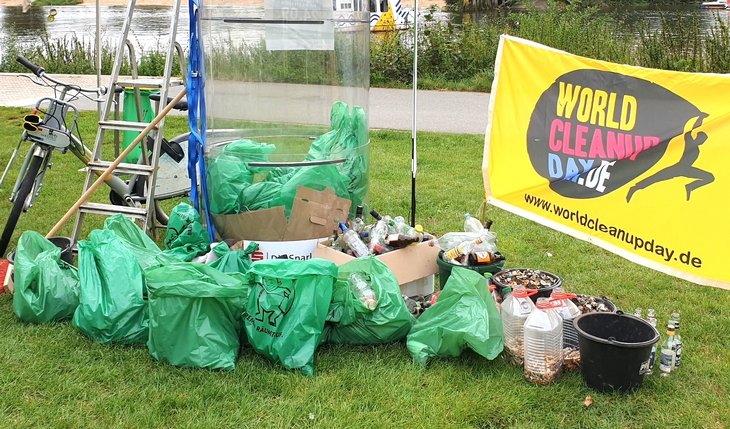
It is equally clear that as long as plastic use remains economically advantageous for governments, companies and individuals alike the problem will only get worse. Plastic is cheap, and that cost-efficiency continues to drive its widespread use. This is precisely why political regulation is so vital.
But we need not wait for legislation to act. Even if it feels like tilting at windmills, choosing to avoid plastic wherever possible and taking part in regular litter-picking campaigns organised by local councils or civil society groups can help, at least a little. Such efforts may not solve the crisis, but they contribute to raising awareness and reducing the harm where we can.
(1) siehe: https://plasticseurope.org/knowledge-hub/plastics-the-facts-2022/
(2) Carmona et al., 2023. A dataset of organic pollutants identified and quantified in recycled polyethylene pellets. Data in Brief, Volume 51, https://doi.org/10.1016/j.dib.2023.109740 und Almroth et al., 2023. Chemical simplification and tracking in plastics. Science Volume 382, Issue 6670. DOI: 10.1126/science.adk9846
(3) siehe auch die Website des neuen Aktionsplans Kreislaufwirtschaft, eur-lex.europa.eu/resource.html oder https://environment.ec.europa.eu/strategy/circular-economy-action-plan_en#documents
(4) siehe: https://litterbase.awi.de/litter_graph, Müll in der Wassersäule und Müll am Meeresboden
(5) Zimmermann et al. (2020) Are bioplastics and plant-based materials safer than conventional plastics? In vitro toxicity and chemical composition. → https://www.sciencedirect.com/science/article/pii/S0160412020320213
(6) https://journals.plos.org/plosone/article?id=10.1371/journal.pone.0284681
(7) Lear et al. (2022) Microbial abilities to degrade global environmental plastic polymer waste are overstated. → https://iopscience.iop.org/article/10.1088/1748-9326/ac59a7/meta
(8) Hohn et al., 2020. The long-term legacy of plastic mass production. Science of The Total Environment, Volume 746. https://www.sciencedirect.com/science/article/pii/S0048969720346441?via%3Dihub sowie Borelle et al., 2020. Predicted growth in plastic waste exceeds efforts to mitigate plastic pollution. DOI: 10.1126/science.aba3656 und Lau et al. 2020, Evaluating scenarios toward zero plastic pollution. Beide Paper veröffentlicht in Science, Volume 369, Issue 6510, DOI: 10.1126/science.aba9475




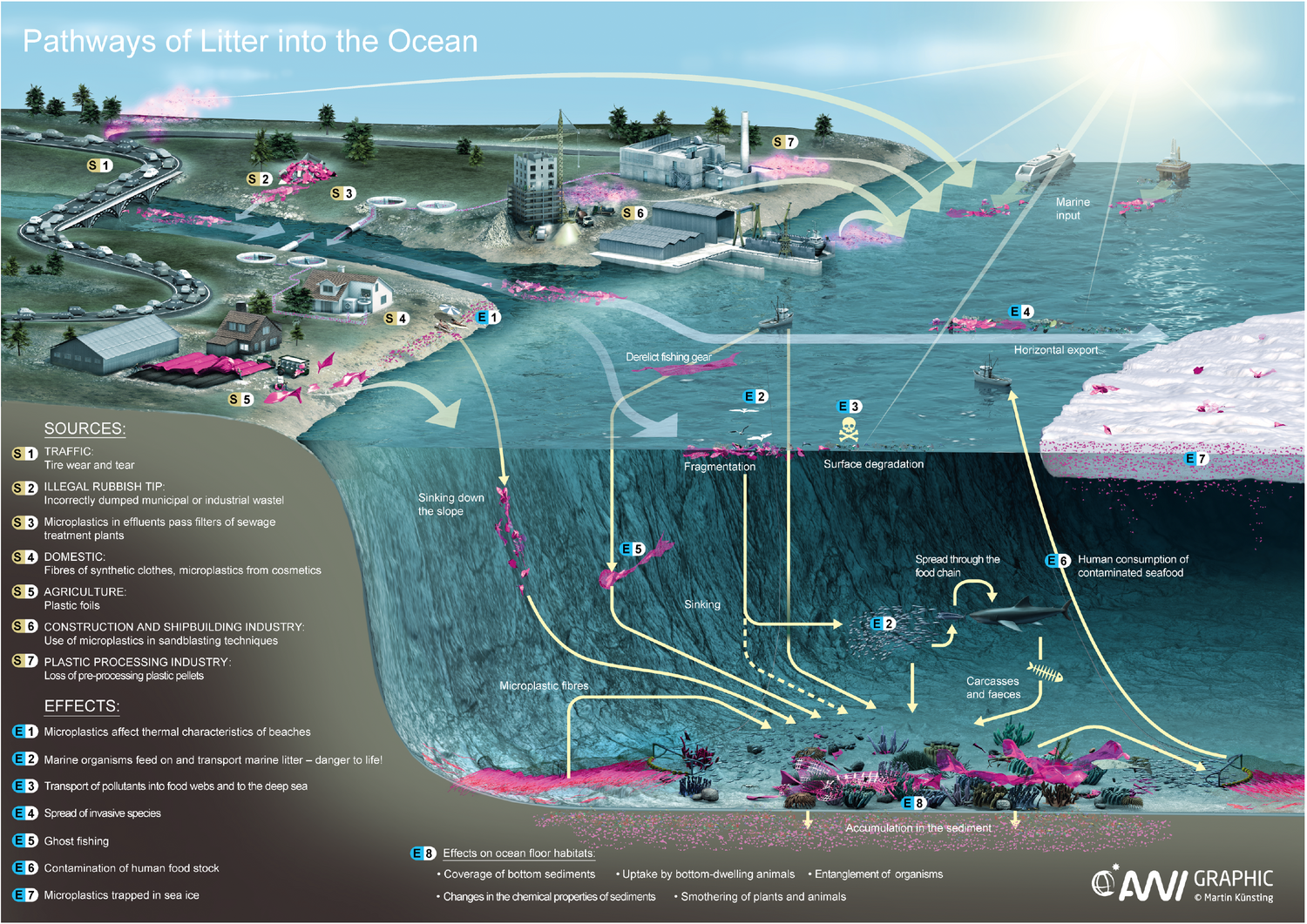
![[Translate to English:] SDGs zu sauberen Ökosystemen The graphics of the six UN Sustainable Development Goals, which include the topic of clean ecosystems on land and in the ocean](/fileadmin/_processed_/b/3/csm_UN-Goals_bb0f3583d0.png)
